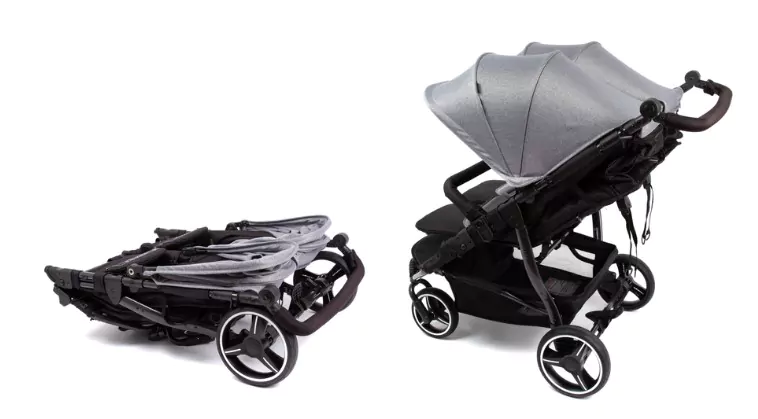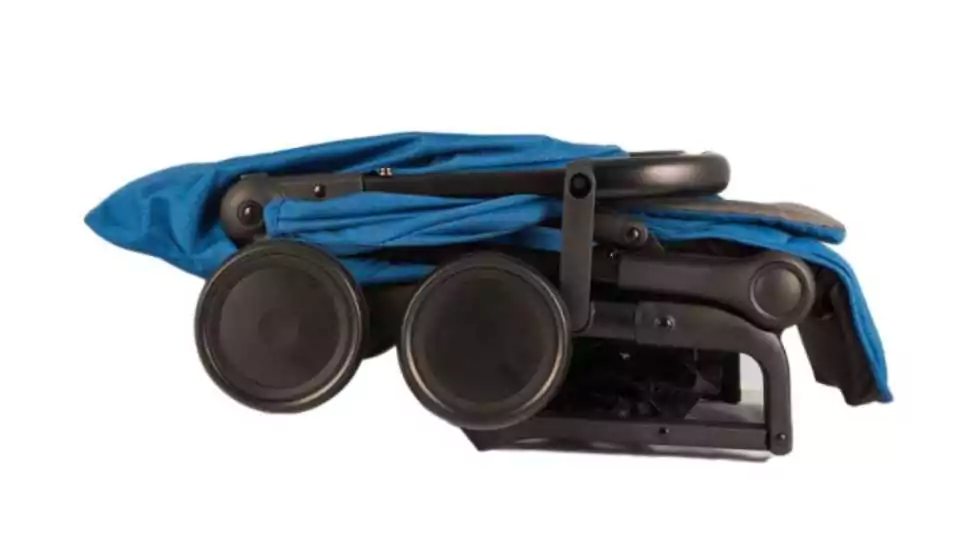How To Fold Baby Stroller for Easy Travel?

Navigating the world of parenting essentials, the stroller stands out as more than just a transportation tool for your little one. It’s an integral part of daily childcare, offering safety, convenience, and comfort. Among the many options available, baby strollers are particularly renowned for their user-friendly design and reliable quality, making them a favorite choice for parents.
Despite their advantages, many parents find the task of folding their stroller, especially for storage or travel, to be a bit challenging. To address this, we’ve created a straightforward, step-by-step guide on how to fold baby stroller efficiently. This guide aims to simplify the process, helping you save time reduce stress, and make your parenting journey just a little bit easier. Let’s get started on mastering the art of folding your baby stroller.
1 Understanding Your Baby Stroller
Overview of Different Models of Baby Strollers

Baby, as a brand, excels in offering a diverse range of strollers, each uniquely tailored to meet varying parental needs and lifestyles. From the compact and agile baby Rover – ideal for city dwellers, to the robust and versatile baby Journey – perfect for the adventurous family, there’s a model for every scenario. Other notable models include the baby Cosy Cosmo, known for its ultra-comfort features, and the baby Breeze, which is the epitome of lightweight convenience. Understanding the specific model you own or are planning to purchase is the first crucial step in mastering its folding mechanism.
Key Features Relevant to Folding Mechanisms
While each baby stroller model boasts its distinct characteristics, there are common features that are essential to their folding mechanisms:
- Locking Levers: These are usually located on the handle or sides of the stroller. They are designed to secure the stroller in its open position and must be disengaged before folding.
- Adjustable Handles: Some models come with handles whose height can be adjusted. These handles often play a role in the folding process, either by being rotated or aligned in a specific manner.
- Release Buttons or Triggers: Many strollers have buttons or triggers that, when pressed or pulled, allow the stroller to be folded. They are often safety-locked to prevent accidental folding.
- Collapsible Frames: The structural design of baby strollers allows them to be collapsed into a more compact form. Understanding how your stroller’s frame folds – whether it’s a one-hand fold, a flat fold, or an umbrella fold – is key.
Importance of Referring to the Specific Model’s Manual
It’s imperative to underscore the importance of referring to your stroller’s specific manual. Each model, with its unique features and folding mechanisms, comes with detailed instructions tailored to ensure your stroller’s longevity and safe use. The manual not only guides you through the folding process but also provides important safety warnings and maintenance tips. Keeping the manual handy or accessing a digital copy online is always a good practice for efficient and safe stroller handling.
2 Preparing to Fold

Before diving into the actual folding process, it’s crucial to prepare your baby stroller properly. This preparation phase not only makes the folding process smoother but also ensures the safety and longevity of the stroller.
Importance of Safety
Safety always comes first, especially when handling equipment designed for your little one. Here are some key safety tips to consider:
- Flat Surface: Always ensure that the stroller is on a stable, flat surface before attempting to fold it. This prevents the stroller from tipping over or rolling away during the folding process.
- Engage Brakes: This might seem like a small step, but it’s vital. Engaging the brakes prevents the stroller from moving unexpectedly, providing a secure base to work with.
Removing Accessories
Baby strollers often come equipped with various accessories designed to enhance convenience and comfort. Before folding the stroller, it’s important to remove these accessories:
- Toys and Attachments: Any toys or dangling items attached to the stroller should be removed to prevent them from getting trapped or damaged during folding.
- Cup Holders and Storage Baskets: Accessories like cup holders and storage baskets should be detached if they protrude or could hinder the folding process.
- Cushions and Additional Padding: While not always necessary, removing any extra cushions or padding can make the stroller more compact when folded.
Ensuring the Stroller Seat is in the Correct Position
The position of the stroller seat is critical for a smooth folding process. Most baby strollers require the seat to be in an upright position to fold correctly. However, some models might have specific requirements, like a fully reclined seat or a forward-facing position. Refer to your stroller’s manual to confirm the correct seat position for folding.
3 Step-by-Step Folding Guide
Now that we’ve ensured our baby stroller is ready and safe to fold, let’s walk through the general steps of the folding process. It’s important to note that these steps are broadly applicable to most baby models but always refer to your specific model’s manual for detailed instructions.
Step 1: Engaging the Brakes
Before anything else, ensure that the stroller’s brakes are fully engaged. This is a critical safety step to prevent any unwanted movement during the folding process.
Step 2: Collapsing the Canopy
Gently push back or fold down the stroller’s canopy. Most baby strollers have a collapsible canopy that either folds back against the stroller or can be removed entirely. Make sure it’s neatly tucked away to avoid any obstruction.
Step 3: Adjusting the Handlebar (If Applicable)
For strollers with adjustable handlebars, set them to the recommended position for folding. This could be either fully extended, lowered down, or rotated. Check your model’s manual for the correct handlebar position.
Step 4: Locating and Using the Folding Mechanism (Buttons/Levers)
Identify the folding mechanism of your stroller, which could be a button, lever, or a combination of both. This is usually located on the handlebar or the sides of the stroller. Depending on the design, you may need to lift, press, or slide these mechanisms to initiate the folding process.
Step 5: Folding Down the Stroller Frame
Once the folding mechanism is engaged, gently push the stroller downwards and inwards. The frame should start collapsing, folding towards the handlebar. Follow through until the stroller is fully folded. Some models have a locking latch that secures the stroller in its folded position.

Tips for Smooth and Easy Folding
- Practice: Familiarity breeds efficiency. Regular practice will help you fold the stroller more quickly and effortlessly.
- Even Pressure: Apply even pressure while folding to avoid jamming or damaging the stroller.
- Maintenance: Regularly check and maintain the folding mechanisms to ensure they work smoothly.
4 Safety Checks and Storage
Once your baby stroller is neatly folded, it’s crucial to perform a few safety checks and follow best practices for storage. This ensures not only the longevity of the stroller but also the safety of everyone around it.
Ensuring the Stroller is Securely Locked in the Folded Position
- Check the Locking Mechanism: Most baby strollers feature a locking mechanism that snaps into place when the stroller is fully folded. Ensure this lock is securely engaged. This prevents the stroller from accidentally unfolding.
- Double-Check Stability: Give the folded stroller a gentle shake to ensure it’s stable in its folded form and the locking mechanism is properly engaged.
Recommendations for Safely Storing the Folded Stroller
- Choose an Appropriate Storage Area: Store the stroller in a dry, safe place away from direct sunlight, which can fade fabrics and weaken plastic components over time. A cool, shaded area is ideal.
- Avoid High Traffic Areas: To prevent tripping hazards and potential damage, avoid storing the stroller in high-traffic areas of your home.
- Keep Away from Children: Store the stroller out of reach of children to prevent any accidents or tampering with the stroller.
Tips for Preventing Damage During Storage
- Avoid Hanging the Stroller: Hanging a folded stroller can strain its joints and frame. It’s best to store it standing up or lying flat on a stable surface.
- Check for Loose Items: Ensure there are no loose items in the stroller that could fall out and get lost or cause damage during storage.
- Protect from Dust: If you’re storing the stroller for an extended period, consider using a stroller cover or a breathable cloth to protect it from dust and dirt.
- Regular Maintenance: Even when not in regular use, periodically check the stroller for any issues and maintain its parts, especially the wheels and folding mechanisms.

5 Troubleshooting Common Issues
Even with the best care and proper usage, you might encounter some issues with your baby stroller, especially related to its folding mechanism. Let’s address some common problems and their solutions, so you can continue to use your stroller with ease.
Addressing Common Problems
- Stuck Mechanisms: If you find that the folding mechanism is stuck, first ensure that all safety locks and brakes are disengaged. Sometimes, debris or dirt can cause the mechanism to jam, so cleaning around the joints and levers might help. Use a dry cloth to wipe away any grime.
- Uneven Folding: If the stroller is not folding evenly or smoothly, check for any obstructions in the frame or wheels. Also, ensure that the stroller is on a flat surface and that you’re applying even pressure when folding.
- Difficulty in Engaging Locking Mechanism: If the locking mechanism isn’t snapping into place easily, check to see if the stroller is fully collapsed. Sometimes, a slight adjustment in the alignment of the frame can enable the lock to engage properly.
Maintenance Tips to Keep the Folding Mechanism Smooth
Regular maintenance can prevent many common issues with your stroller:
- Regular Cleaning: Keep the stroller clean, especially around moving parts. A soft brush can help dislodge dirt and debris.
- Lubrication: Occasionally, applying a silicone-based lubricant to the moving parts of the folding mechanism can keep it operating smoothly. Avoid oil-based lubricants as they can attract dirt.
- Check for Loose Screws or Bolts: Periodically tighten any loose screws or bolts, as these can affect the stroller’s folding mechanism.
- Inspect for Wear and Tear: Regularly inspect the stroller for any signs of wear and tear, especially if it’s used frequently or in rugged conditions.
6 Wrapping Up
Folding your baby stroller correctly requires a bit of practice, but once mastered, it becomes second nature. Remember, the key to a smooth experience is familiarity with your specific model, adherence to safety guidelines, and regular maintenance. With these practices in place, you can enjoy the convenience, reliability, and ease of use that baby strollers are known for.
Embark on your adventures with confidence, knowing that your baby stroller is not just a means of transporting your precious cargo, but a trusted companion in the beautiful journey of parenthood. Happy strolling!
Community Q&A
About This Article
This article has been viewed 107 times.



